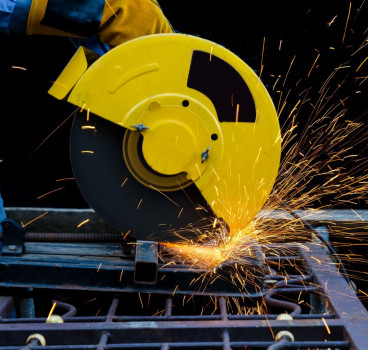Western hypocrisy in construction standards - are we really better?
When tragedies like building collapses or fatal fires occur in developing nations, the criticism from Western observers is often swift and harsh. Western countries routinely accuse these nations of using substandard materials, cutting corners and compromising safety. Yet, a closer look reveals that the Western world is not immune to similar issues. While overt structural failures may be less common, Western practices such as cost-cutting, prioritising the lowest bid and systemic underfunding of critical projects can lead to compromised safety and quality, writes John Ridgeway.
One of the most pervasive issues in Western construction practices is the reliance on competitive bidding, often emphasising the lowest price. While this approach aims to ensure fiscal responsibility, it often leads to compromises in quality. Government and local authority projects are particularly guilty, as they frequently prioritise budget constraints - and this in turn can affect durability and long-term safety. This practice raises the question - is the Western world truly setting a higher standard, or are we masking systemic flaws under a veneer of regulation and oversight?
The Grenfell Tower fire in London (2017) serves as a stark reminder that cost-cutting in construction and maintenance can have catastrophic consequences. The cladding used on the tower was chosen in part because it was less expensive than safer alternatives. Despite being in compliance with certain regulations, the material was highly flammable and played a significant role in the rapid spread of the fire. The tragedy claimed 72 lives and exposed systemic flaws in construction oversight and prioritisation of costs over safety.
It’s easy to point fingers at developing countries when disasters occur, but a closer examination reveals some shared practices that undermine safety and quality. In both the developing and developed world, lower-cost materials often replace higher-quality alternatives to save money. For example, in the US, the 2007 collapse of the I-35W bridge in Minneapolis highlighted systemic issues in infrastructure funding. A National Transportation Safety Board investigation revealed that design flaws and deferred maintenance were key contributors to the disaster.
In Western nations, regulatory bodies are tasked with ensuring safety standards, but understaffing and resource constraints often mean that inspections are cursory or infrequent. Another example is the Flint water crisis in Michigan, although not a construction failure per se, it underscores how cost-cutting in public projects can lead to disastrous public health outcomes. A switch to a cheaper water source without corrosion controls resulted in lead poisoning affecting thousands of residents – so are we really different to many third world countries?
Developing nations
Developing countries face unique challenges, such as resource scarcity, political instability, and lack of infrastructure. These factors often force compromises that Western countries criticise. However, it’s important to acknowledge the context. Governments in these countries often operate with significantly smaller budgets, making it challenging to prioritise long-term safety over immediate needs.
Explosive population growth and urban migration in developing nations also puts immense pressure on governments to build quickly, often at the expense of quality. However, similar pressures exist in the West, particularly in cities facing housing crises.
While Western construction projects may not collapse outright, they often suffer from hidden compromises that manifest over time, Many Western countries, for example, struggle with aging infrastructure. The American Society of Civil Engineers regularly gives the United States a failing grade in its Infrastructure Report Card, citing delayed maintenance and underfunding as critical issues.
In addition, cost-cutting practices in the West often disregard environmental considerations. The failure to incorporate sustainable practices or materials, even when available, compromises the long-term viability of projects.
It must also be said that while developing nations often face criticism for poor worker safety standards, construction workers in the West are not immune. For instance, OSHA (the US Occupational Safety and Health Administration) data shows that construction remains one of the most dangerous industries in the US, with frequent fatalities caused by falls, equipment mishaps and insufficient safety measures.
What can be done?
So, rather than focusing solely on the shortcomings of others, Western countries must address their own systemic issues to lead by example. Quality-based selection (QBS) should be prioritised over the lowest-cost approach. By evaluating contractors based on experience, materials and proposed timelines alongside cost, governments can reduce long-term risks.
Governments and private stakeholders must prioritise long-term resilience over short-term savings. Investing in quality materials, regular maintenance, and updated safety standards can prevent disasters. Transparency and accountability are equally vital, ensuring that cost-saving measures do not compromise public safety.
Construction quality is not just a local issue - it’s a global one. The construction industry contributes significantly to GDP and is critical for addressing challenges like urbanisation and climate change. Western countries must collaborate with developing nations, sharing best practices and resources to improve standards worldwide.
It’s time for the Western world to move beyond criticism and introspection. While developing nations undoubtedly face challenges in construction quality, the West’s reliance on cost-cutting and systemic underfunding reveals its own vulnerabilities. By addressing these issues at home, Western nations can set a genuine example for the global construction industry.
Ultimately, the goal should not be to highlight who is doing worse but to collectively work toward a future where construction quality and safety are universal priorities. Every project should stand as a testament to our shared commitment to building a better world – as opposed to building at the lowest possible price.
Additional Blogs

How Does OSHA and HSE Enforce Their Standards?
The Occupational Safety and Health Administration (OSHA) and its U.K. counterpart, the Health and Safety Executive (HSE), are the primary bodies governing workplace safety. Their role is to reduce...
Read moreIs modular construction suffering from an identity problem?
Modular construction has been hailed as the future of the building industry for more than a decade. Promises of speed, efficiency, reduced waste and improved quality have made it a go-to headline...
Read more

The small innovations helping to transform construction
Construction’s biggest stories tend to revolve around landmark buildings, major digital breakthroughs, or the occasional crisis that pushes the industry into the headlines. Yet much of the sector’s...
Read more